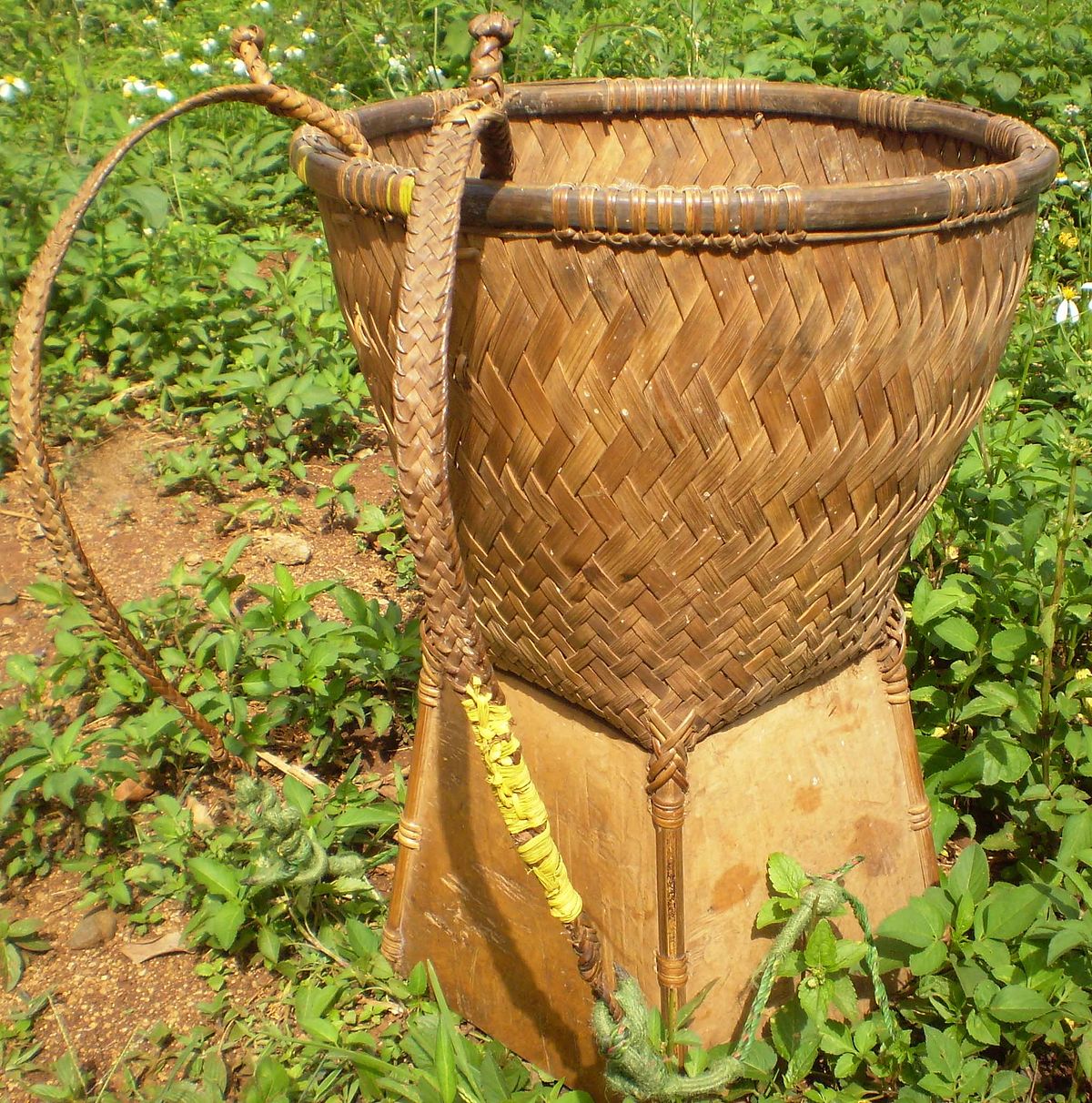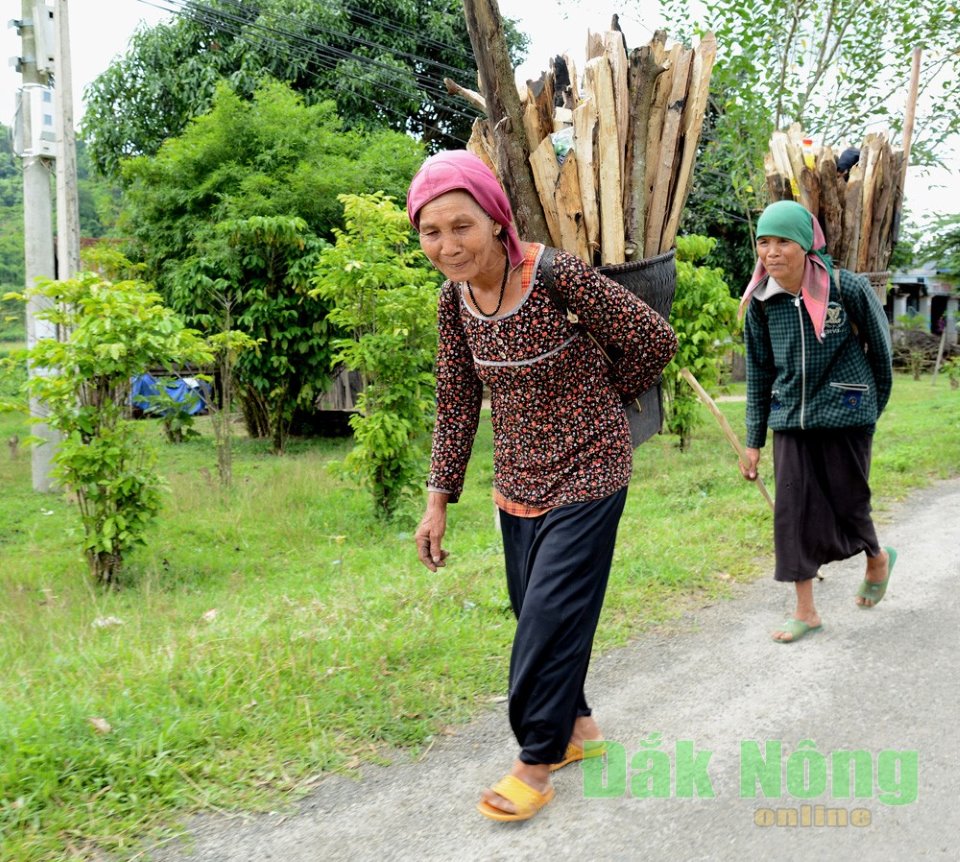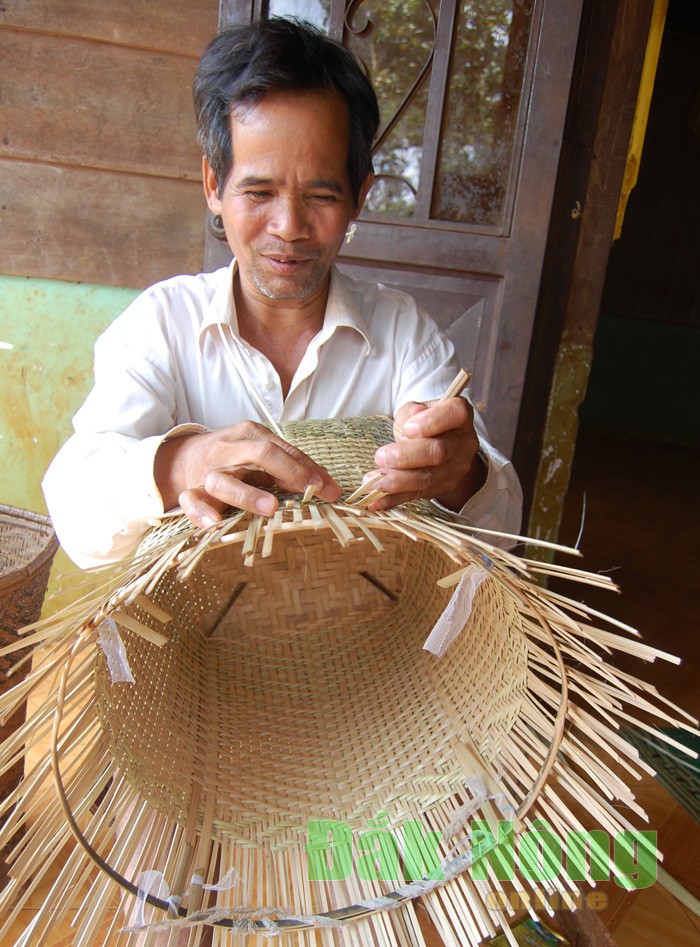
For the people of ethnic group of Mnong (Mnong people), apart from tools like Gong, Che, Calabash for keeping water, cooked rice or Nia for sieving seeds and corns, Gui ( Sah in M’nong language) as well plays a very importance role in Mnong people's daily life. Sah is an essential tool to Mnong people not only in their families’ activities but also in the rituals and festivals of their community.
 |
| Sah is also a useful tool, coming in handy in the daily work and labour of Mnong people |
In the past time, like the people of ethnic groups of E de, Ma, Xe dang… in The Central of Highlands, Mnong people used to practice farming in the newly reclaimed land up in the mountain areas. Due to the topographical condition, which was full of obstacles and very difficult for access, the normal way of carrying things on hands or on shoulders became impossible for people living in such area. In that case, people had to use Sah to transfer their havested farm produces.
According to Mr Dieu MRung, a member of Mnong communities in Dak R'moan commune, Gia Nghia town, Daknong province, he and the people in his community could not know for sure when Sah came into being in their life. The only thing he knowed was that his father passed on the way of making a Sah to him since he was a child. As he get a little older, he usually followed his mom and elder sisters to carry Sah along as they went into the forest, picking bamboo shoots and vegetables. When grown up, he continued to pass on the way of making Sah to his children and other descendants. That way, the Sah gradually became closely connected with him and the people in his community as well in their daily activities, like an intimate friend.
In addition, Sah was also an indispensable tool in the festivals of Mnong people. In organizing the rituals of worshiping the God of Rice, the God of Rain or the community reunion festival, people used to place a number of Sahs at the area of worshiping ceremony to hold the offerings such as toasted meat, Com lam (rice cooked inside a bamboo internodes), and the farm produces to offer to the Gods.
Besides, Sah was also condidered a decoration tools, a means to show the aesthetic ideals, the clever and talented hands of Mnong men before they gets married, building up families. Also, Sah embodies the diligence and endure of women, which had even gone into the poems, stories and epics of Mnong people.
Making a Sah takes plenty of time and many stages of work. Those stages start from searching to attain materials such as bamboo stems, strings (attained from a kind of tree in forest too); to exposing the materials to the sunlight, then whittling the bamboo timber into the laths of expected size, making them shiny. From the start until the stage of knitting to form a completed Sah, at least 2 to 3 weeks would have passed.
To create the decoration patterns on Sah, the maker knits the laths that have been dyed in colour materials derived from resin attained from forest trees, or switches between the greener side and the lighter colored side of the laths so the Sah could have expected colour. The straps of Sah are made from rattan canes, also taken from the forest that has the quality of being tough and easy to bend over. The upper end of the strap must be larger than the lower end in order not to hurt as well as give people the comfortable feeling while they carry heavy things. The support of Sah is normally made from some kinds of soft wood or 4 pieces of old bamboo timber attached tight to 4 points under the basement, forming solid fulcrums, keep Sah from falling down when people drop it on a surface.
 |
| Making a new Sah |
Normally, Sah of Mnong people has the height of 50 - 60 cm, round mouth, narrow figure with the basement smaller than the mouth, coming in different sizes. Depending on the purpose of people using it, Sah can be changed slightly in the way it is made. For example, Sah for carrying firewoods or vegetables would be sparsely knitted with a lot of hexagon-shaped space (3-4 cm wide). As for Sah used for holding farm produces like grains, beans, corns, it is densely knitted to prevent produces from falling out and scattering around.
Nowadays, with a lot of changes in life, including paths becoming gradually easier for travel, people have turned to use other means to transfer their farm produces and commodities from place to place. However, if ones went into the village that is home to Mnong people, they could still easily catch the image of the elder artists who is passing on the way of knitting Sah to their offsprings, as well as the image of mothers, grandmothers carrying Sah along with them while going to pick up firewoods or bamboo shoots somewhere in the forests.
Along with such way of continual practice, preservation and passing from generation to generation, Mnong people still hope and believe that however life could change, it never changes the position of Sah as the most useful tool and an intimate friend of people in their community.